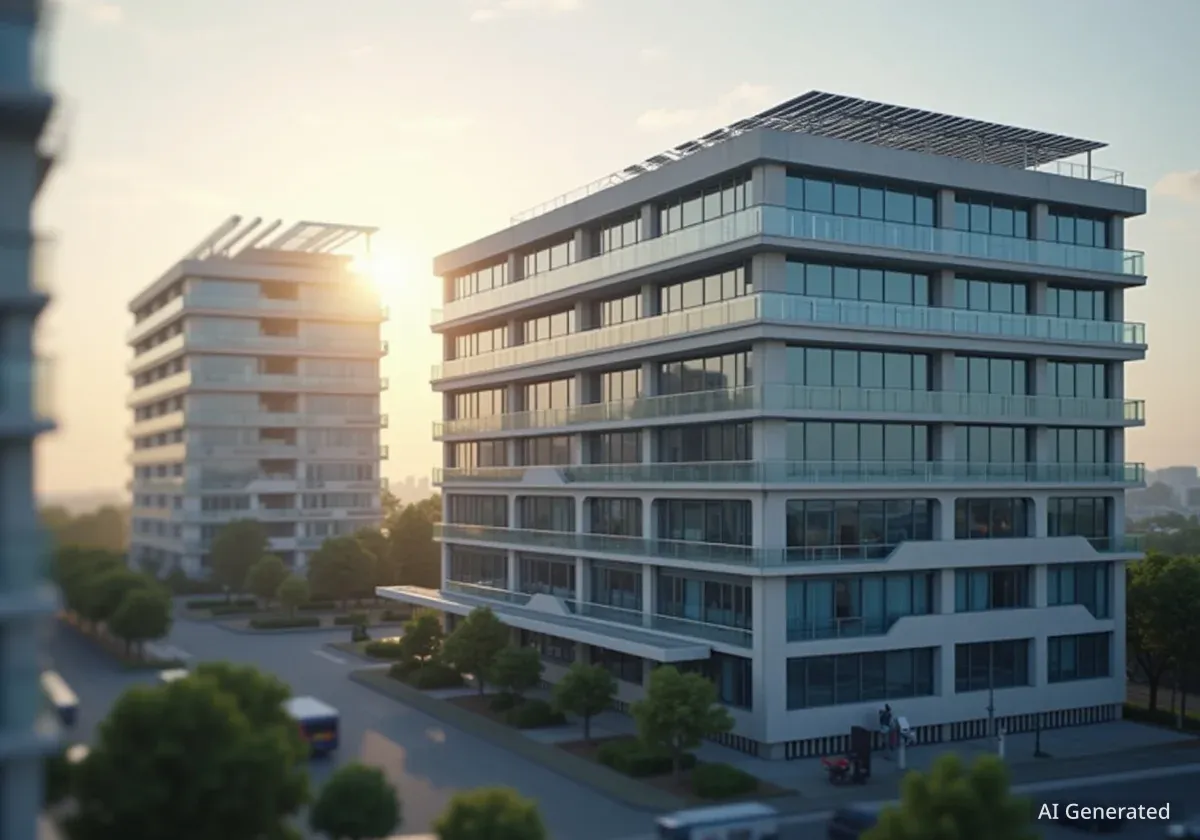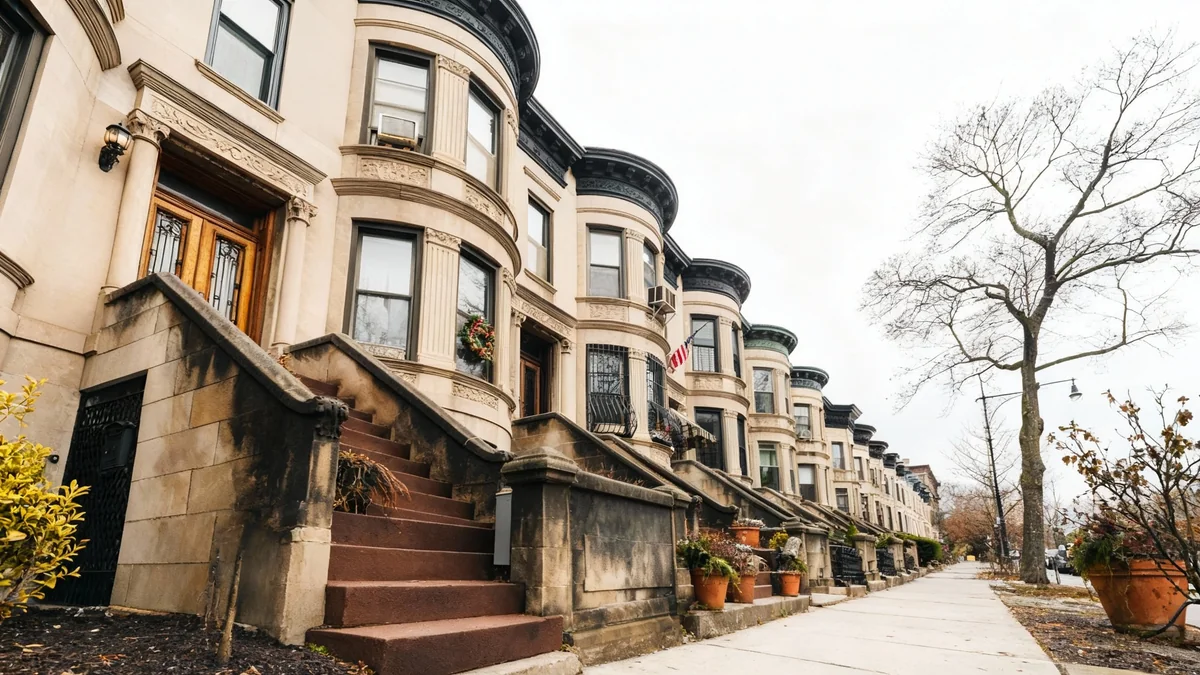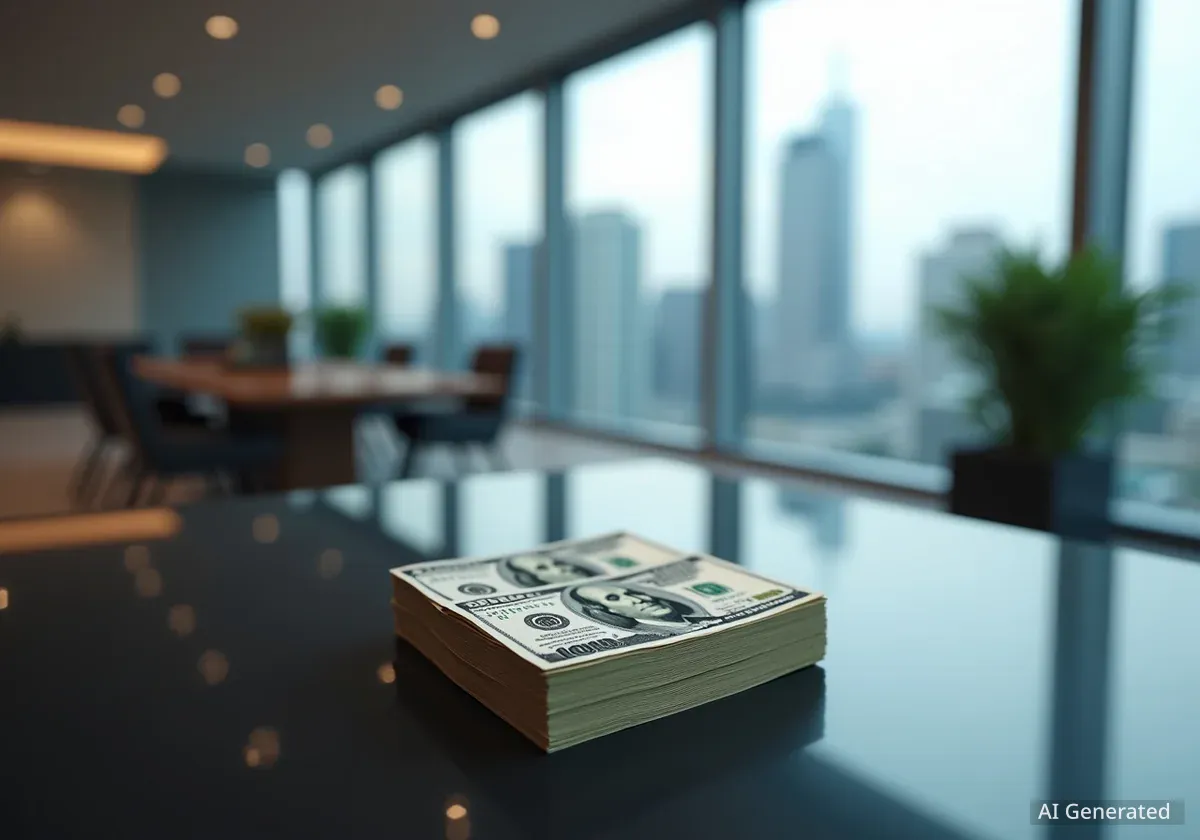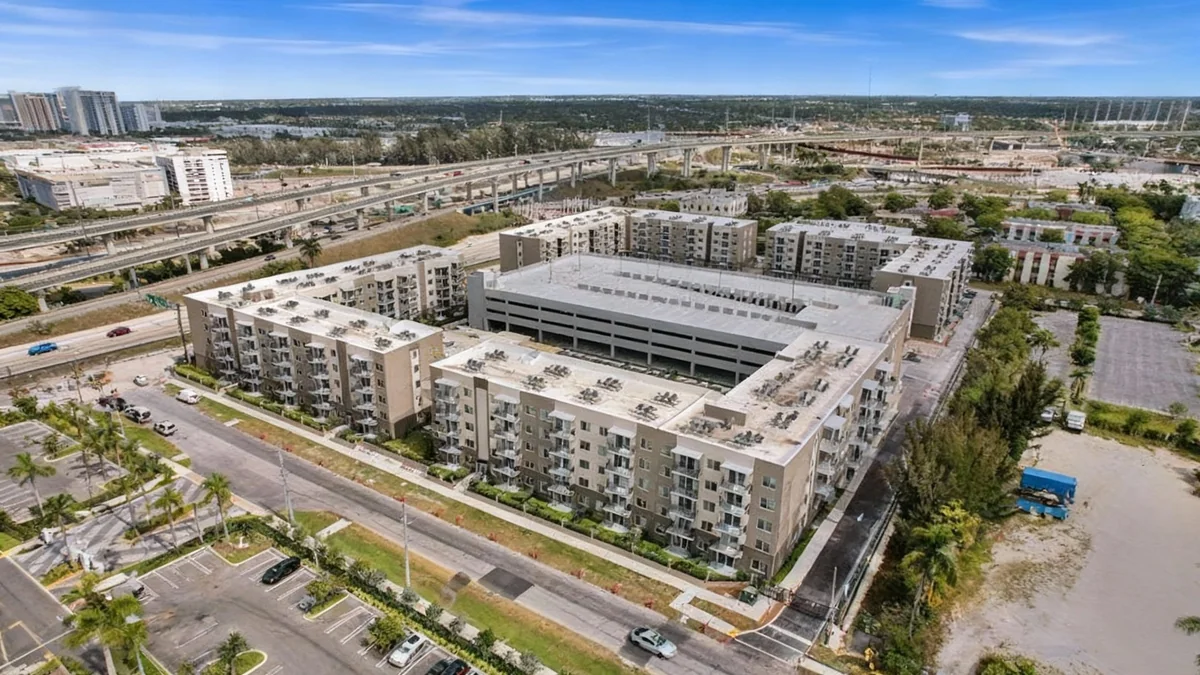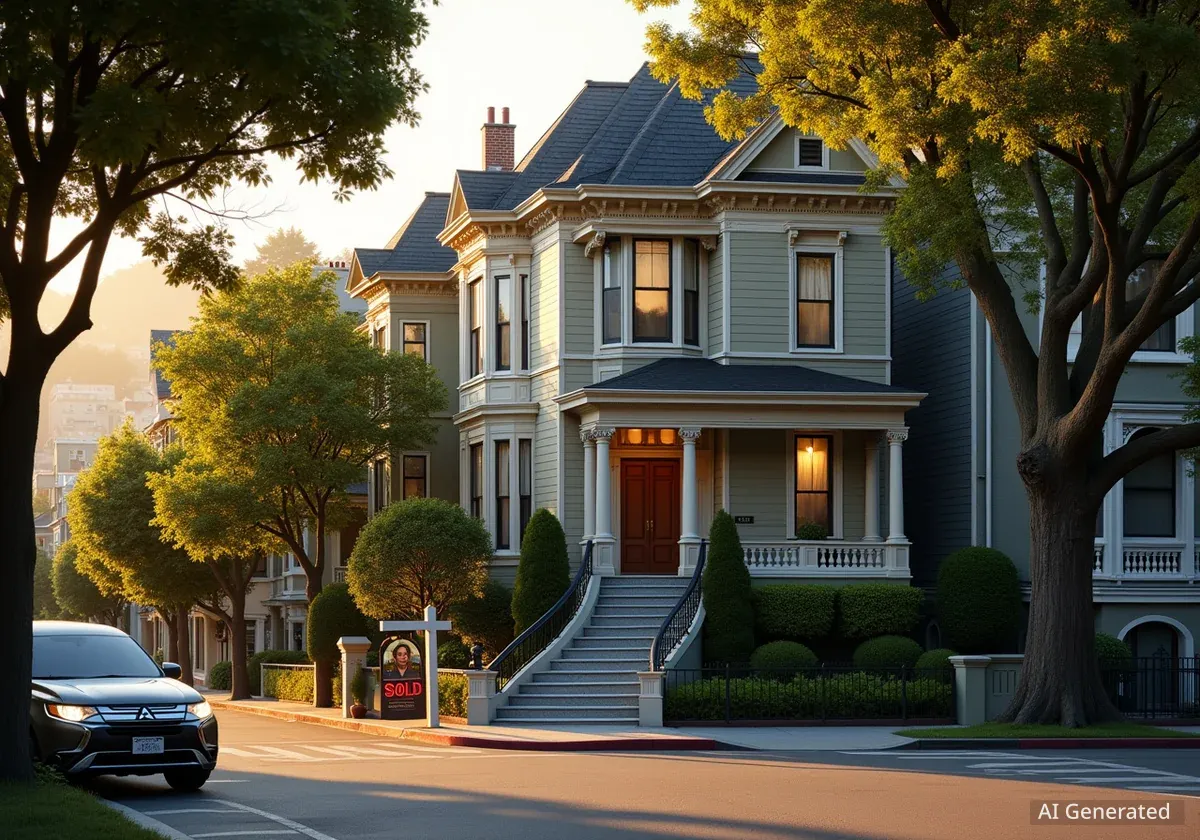A new report from real estate services firm JLL indicates that sustainability is no longer an optional feature but a core component of high-value commercial properties. As market conditions shift away from an era of low interest rates, investors are finding significant financial returns by retrofitting older buildings with energy-efficient and low-carbon technologies.
This trend is driven by strong tenant demand for green office spaces, volatile energy costs, and tightening environmental regulations worldwide. Obsolete buildings in prime markets are now viewed as a primary value-add opportunity, signaling a potential turning point in the real estate investment cycle.
Key Takeaways
- Sustainability has become a key measure for best-in-class real estate, alongside operational performance and technology integration.
- Older, less efficient buildings in high-value markets represent a significant opportunity for investors to create value through sustainable retrofits.
- Market forces, including tenant demand for green buildings, rising energy costs, and stricter regulations, are making sustainable properties more profitable.
- JLL research shows that retrofitting rates must increase fivefold, from 2.4% to 13.2% annually, to meet global decarbonization goals.
- Examples in New York and Boston show that buildings with low-carbon transformations can command rent premiums of over 30%.
The New Definition of Prime Real Estate
The criteria for what makes a commercial building a top-tier asset have fundamentally changed. In the past, location and amenities were the primary considerations. Today, a building's value is increasingly tied to its operational performance, tenant experience, and technological infrastructure.
According to Guy Grainger, Global Head of Sustainability Services at JLL, buildings that fail to meet these modern standards are becoming more expensive to operate and less desirable for corporate tenants. This shift marks an end to the period where investors could rely on broad market growth rather than active asset management.
Many property owners delayed major capital expenditures over the past three years due to difficult market conditions. This has resulted in a growing stock of properties that are now considered obsolete, meaning they no longer meet current market requirements.
From Risk to Opportunity
Historically, property obsolescence was viewed as a liability. However, JLL's analysis suggests this growing inventory of outdated buildings presents a major investment opportunity. Rather than a risk, these properties are a signal that the market may be at the bottom of a cycle, poised for a new phase of value creation focused on strategic upgrades.
Key Drivers for Sustainable Investment
Several converging market fundamentals are strengthening the business case for investing in low-carbon and energy-efficient building strategies. These factors are creating a clear financial incentive for property owners to upgrade their portfolios.
1. Surging Tenant Demand
One of the most powerful drivers is the demand from corporate tenants for low-carbon buildings. As more companies commit to their own net-zero emission goals, their choice of office space becomes a critical part of their environmental strategy. These tenants are actively seeking energy-efficient spaces with modern technology, but the supply of such buildings is currently lagging far behind demand in many key markets.
2. Volatile Energy Markets
Energy costs have become a major concern for both landlords and tenants. Volatile prices and an aging energy grid have highlighted the financial benefits of energy efficiency. In some high-cost U.S. markets like Chicago and Los Angeles, electricity expenses can account for nearly 26% of a building's rental income.
The increasing adoption of electric vehicles (EVs) adds another layer of complexity, as connecting EV chargers can significantly increase a building's power demand. This creates an opportunity for building owners to invest in energy performance upgrades that deliver substantial returns.
3. Tightening Regulations and Climate Risk
Governments around the world are implementing stricter regulations to reduce carbon emissions from the built environment. Building performance standards are becoming more common, creating compliance risks for owners of older, inefficient properties. At the same time, the physical risks associated with climate change, such as extreme weather events, are prompting institutions to prioritize climate resilience in their real estate portfolios.
A Massive Opportunity
JLL research estimates that approximately 1.5 billion square feet of potentially obsolete commercial real estate, or 70% of the total, is located in markets with high potential for sustainability-driven value creation. Key cities include London, Paris, New York, Toronto, and Singapore.
Unlocking Value Through Smart Retrofitting
The most direct path to capitalizing on these trends is through retrofitting existing buildings. However, the current pace of upgrades is insufficient. To meet established decarbonization targets, the annual rate of retrofitting needs to increase from 2.4% to 13.2%, a more than fivefold jump.
A return to fundamental real estate asset management is required, focusing on energy-smart strategies, technology integration, and climate resilience. This is not a one-size-fits-all solution; the right approach depends on the property type.
- Logistics and Data Centers: These power-intensive sectors are most affected by energy market dynamics. On-site power generation and battery storage can offer significant returns.
- Office Buildings: This sector sees strong demand for low-carbon leases due to the high concentration of corporate tenants with net-zero commitments. This creates a widening value gap between green-certified buildings and underperforming ones.
The Future is Energy-Smart Buildings
Modern retrofitting strategies go beyond simple efficiency upgrades. The goal is to transform buildings from passive energy consumers into active, decentralized energy hubs. By implementing on-site energy generation, such as solar panels, and battery storage systems, buildings can reduce their reliance on the grid.
These smart buildings can also work with utility providers to manage energy use during peak demand periods. This not only improves their own operational resilience but also supports the stability of the broader energy grid, helping to accelerate the transition to a low-carbon economy.
"The convergence of ever-increasing tenant demand for low-carbon space, volatile energy costs and tightening regulations has created a perfect storm of opportunity. With so much potentially obsolete stock sitting in high-value markets, the race is on to capture what may be the most significant value-add opportunity commercial real estate has seen in decades."
The financial evidence supporting this trend is already clear. In New York, the retrofitted One Madison Avenue commands rents 32% above the market average. Similarly, One Post Office Square in Boston achieved a 30% rental premium after its low-carbon transformation. These are not isolated cases but indicators of a new market reality.
As the report concludes, the gap between sustainable, high-performing buildings and those that fail to adapt will only continue to grow. Investors who recognize that sustainability is now a core component of value are actively deploying capital, positioning themselves to benefit from this structural shift in the real estate market.

